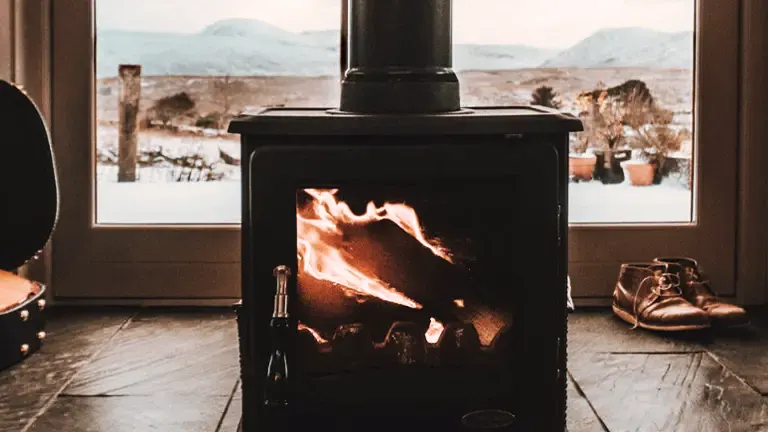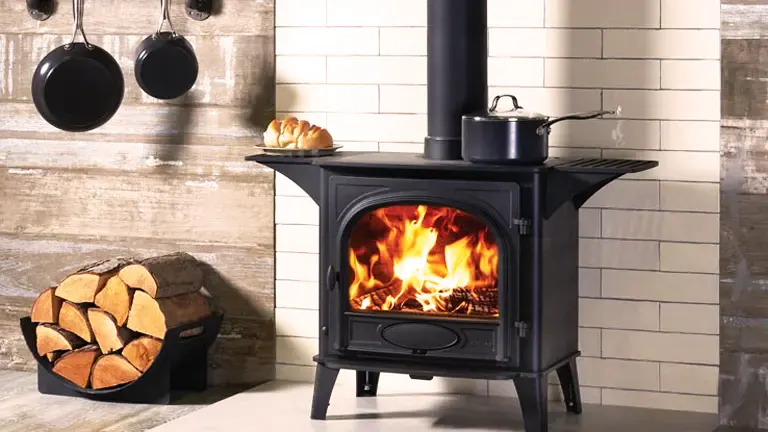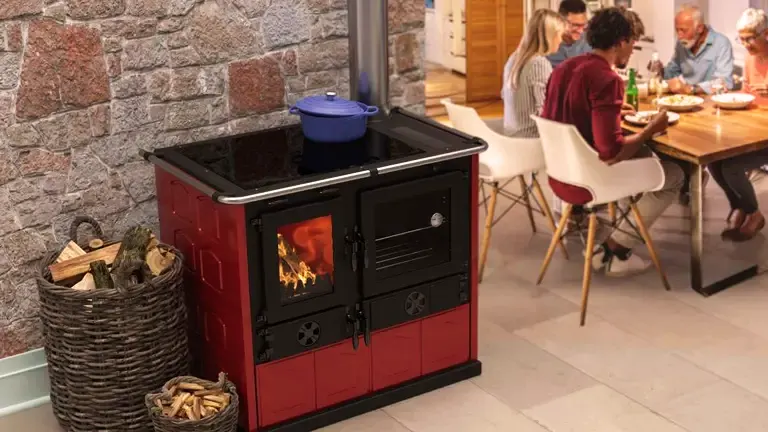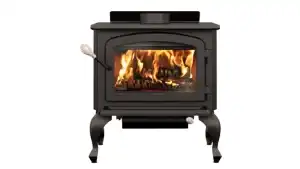How to Choose the Right Wood Cooking Stoves for Your Needs
- September 29, 2023
- 0 comment
Selecting the perfect wood cooking stove can be akin to finding the right partner; it should offer warmth, and reliability, and suit your style. With myriad options available, the task can seem daunting. However, with a little knowledge and insight, you can make an informed decision that brings comfort to your home for years to come. Dive in as we guide you through the nuances of choosing the right wood cooking stove tailored to your needs.

Before diving deep into the nitty-gritty of wood stoves, it’s crucial to understand their significance, especially during the cold months. Winter demands efficient heating and cooking solutions, and for many, the answer lies in wood stoves. They offer not just warmth but also a dependable way to cook, turning a bleak winter day into a cozy culinary adventure.
What is a Wood Burning Cooking Stove?
A wood-burning cooking stove, as the name suggests, uses wood as its primary fuel source. Unlike modern gas or electric stoves, these stoves rely on the controlled burning of wood to generate heat for both cooking and warming up the living space. They come in varying designs, from traditional to modern, but all share the core principle of combustion of wood.
Types of Wood Burning Cooking Stoves
Traditional Stoves

Crafted predominantly from cast iron, traditional stoves harken back to an era when kitchens emanated a rustic essence. These stoves, which have been in use for centuries, are revered not just for their impressive heat retention and even distribution, but also for their aesthetic value. Many of these stoves come adorned with intricate designs and ornate finishes, celebrating the artistry of the past. Their weight and durability are a testament to their long-standing role in homes across the globe. Manual ignition and adjustable heating, controlled through air intake and fuel amount, make them an ideal fit for those seeking an authentic wood-burning experience coupled with old-world charm.
Modern Stoves

Modern wood stoves merge the age-old reliability of materials like cast iron with the sleekness of contemporary materials such as stainless steel. The hallmark of these stoves is their heightened efficiency, owing to advanced combustion technologies that maximize heat output while minimizing wood use. Not only are they environmentally friendlier, but they also prove economical in the long run. Further, many come equipped with modern amenities, such as air wash systems for a cleaner glass door, secondary combustion features, and in some advanced models, digital controls. These stoves elegantly complement contemporary home settings, combining the magic of wood-burning with the convenience of today’s technological advancements.
Rocket Stoves

Rocket stoves, with their distinct design focused on a heightened draft for optimized combustion, stand out in the realm of wood stoves. The very name is derived from the rocket-like sound they emit, hinting at the stove’s power and efficiency. Designed with an insulated vertical chimney, rocket stoves burn wood at exceptionally high temperatures, resulting in a cleaner and quicker burn. Their compact and portable nature, combined with their high efficiency, makes them ideal for outdoor cooking or settings where space might be limited, like camping expeditions.
Potbelly Stoves

Distinctive for their round, bulbous design, potbelly stoves are an ode to a unique style of wood-burning. Constructed primarily from cast iron, these stoves have a broad base that narrows towards the top, allowing them to effectively radiate heat in all directions. Though primarily renowned for their heating capabilities, their versatility shouldn’t be overlooked. The flat top of a potbelly stove doubles as a cooking surface, making it a multifunctional appliance suitable for both warming space and whipping up a meal.
Wood Cook stoves with Ovens

Wood cookstoves with ovens can be likened to the all-in-one powerhouses of the wood stove world. Imagine a wood-powered counterpart of the modern kitchen range, complete with a dedicated oven and multiple burners. These stoves promise a comprehensive cooking solution, offering the flexibility to bake, roast, boil, and fry using just one unit. Many are equipped with user-friendly features such as temperature gauges, warming compartments, and expansive fireboxes. For those who lean heavily on wood for their culinary endeavors, these stoves are more than just appliances; they are the heart of a kitchen.
Recommendations for Wood Cooking Stoves
Navigating the vast sea of wood cooking stove options can be daunting. Your choice largely depends on your specific needs and the primary purpose the stove will serve. Here are some tailored recommendations to help you narrow down your options:
Best for Heating
- Traditional Cast Iron Stoves: These stoves are not just a nod to the past, but they’re practical choices for modern times. Cast iron is known for its heat retention properties, ensuring that the warmth lingers long after the fire has died down. Aesthetically, they bring an old-world charm to your space, making them as much a piece of decor as a functional unit. The gradual and consistent release of heat ensures that your space remains warm and cozy.
- Modern Stoves: If you’re someone who enjoys the charm of a wood stove but doesn’t want to compromise on efficiency, modern stoves are your best bet. They’ve been designed with advanced technologies that allow them to produce more heat with less wood. They are often sleeker and might better suit contemporary interiors. Moreover, they often come with features that make them easier and safer to operate.
Best for Cooking
- Wood Cookstoves with Ovens: These are the all-rounders of the wood stove world. With a dedicated oven and multiple burners, they are purpose-built for those who wish to rely on wood for their daily culinary adventures. From baking bread to simmering stews, these stoves offer a comprehensive cooking experience, and the wood fire imparts a unique flavor that’s hard to replicate with other cooking methods.
- Potbelly Stoves: For those who want a taste of tradition and a hands-on cooking experience, potbelly stoves are a delightful choice. Their flat top serves as a cooking surface, perfect for frying, boiling, or even some basic baking with the right cookware. Plus, there’s a certain rustic charm in cooking atop these stoves that modern appliances can’t match.
Best for Small Spaces
- Rocket Stoves: Size doesn’t always equate to power, and rocket stoves are a testament to that. Despite their compact design, they pack a punch when it comes to efficiency. They’ve been engineered to produce a hot flame with minimal wood, ensuring you get the most out of your fuel. Their portability is an added bonus, making them a favorite for those who love outdoor cooking or camping. For small homes, patios, or even for those who just want a backup cooking option, rocket stoves are an ideal choice.
Benefits of Using a Wood Burning Cooking Stove
- Eco-friendly: Our planet’s health is paramount, and making choices that contribute positively is essential. Wood, when harvested sustainably, is a renewable resource. Unlike fossil fuels, which release carbon that has been stored for millions of years, wood releases carbon that has been recently absorbed during its growth cycle. Therefore, burning wood doesn’t add to the net increase of carbon dioxide in the atmosphere, provided new trees are planted to replace those harvested. This cycle ensures that the balance of carbon released and absorbed remains neutral, making it a greener choice.
- Cost-effective: For many, especially those living in wooded areas, access to wood is both easy and affordable. Some may even have land where they can sustainably harvest their own wood. In such scenarios, using a wood stove can result in significant savings over time, especially when compared to the rising costs of electricity or gas. Moreover, with the right skills and tools, wood can be processed and stored, reducing long-term expenses.
- Reliability: The modern world is not without its fragilities. Power outages, especially during harsh weather conditions, can render electric stoves useless. In more remote locations, access to consistent gas or electricity might be a luxury. Wood stoves stand out in these situations. They operate independently of external power sources, ensuring you have a reliable means of cooking and heating whenever you need it.
- Ambiance: Beyond the tangible benefits, wood stoves offer an experience. The rhythmic crackling of burning wood, the dance of flames behind the stove glass, and the distinct, comforting aroma create an ambiance that’s both soothing and nostalgic. It’s not just about cooking or heating; it’s about creating memories and an atmosphere that modern appliances often fail to deliver.
- Versatility: Wood stoves are not single-purpose appliances. Many of them, especially those with flat tops, double up as cooking surfaces. Whether it’s brewing a morning pot of coffee, simmering a hearty stew, or even baking bread with certain designs, a wood stove’s versatility ensures it remains a functional and integral part of a household.
Is a Wood Stove Worth It?

While wood stoves come with numerous advantages, they also require commitment. You’ll need a steady wood supply, regular maintenance for safety, and the willingness to engage with the physical process of burning wood.
However, for many, these are not burdens but rather joys. The tactile process of feeding the fire, the satisfaction of sustained warmth on a cold day, and the undeniable taste advantage of wood-fired cooking make it a worthy investment for many.
In conclusion, choosing the right wood cooking stove depends on your needs, budget, and personal preferences. With the right information at your fingertips, your winter can be transformed into a season of warmth, delicious food, and unmatched ambiance.
FAQs
- Why are some wood stoves referred to as “modern” when the concept of wood burning feels so ancient?
Modern wood stoves incorporate advanced combustion technologies, making them more efficient and eco-friendly compared to their traditional counterparts. They merge age-old heating principles with contemporary design and technology. - I live in a tropical climate; could there be any benefits to owning a wood stove?
Absolutely! Apart from heating, wood stoves, especially those with flat tops, can serve as unique cooking surfaces, imparting a distinct flavor to food. Plus, they can be a savior during power outages, providing an alternative cooking method. - Can wood stoves be integrated into a modern, minimalistic home design without looking out of place?
Yes, many modern wood stoves feature sleek and contemporary designs, with clean lines and sophisticated finishes that can complement a minimalistic aesthetic. - Are there wood stoves tailored for those living in small apartments or tiny homes?
Indeed! Rocket stoves and some compact modern stoves are designed with space-saving in mind. They’re efficient, compact, and can fit seamlessly into smaller living spaces. - I’ve heard about “cooking stove culture” in various countries. What is it?
“Cooking stove culture” refers to the traditions, stories, and communal experiences that revolve around the wood stove in various cultures. From family gatherings to communal feasts, the wood stove often serves as the heart of many cultural interactions. - Does the type of wood I use in the stove impact the flavor of the food?
Definitely! Different woods impart distinct smoky flavors. For instance, applewood might give a sweet, fruity touch, while hickory can provide a strong, bacon-like flavor. - Are there any modern wood stoves that can be controlled remotely or via apps?
While the primary operation of wood stoves is manual, some advanced models might feature digital controls, temperature monitors, or even remote operation capabilities for air intake regulation. - I’m environmentally conscious. How can I ensure that my use of a wood stove doesn’t harm the environment?
Opt for stoves certified for low emissions, use sustainably harvested wood, and ensure proper maintenance to achieve complete combustion, thus minimizing smoke and pollutants. - Is there a learning curve to cooking on a wood stove compared to my electric or gas range?
Yes, wood stoves provide a more tactile cooking experience. It might take a few tries to master temperature control and heat distribution, but many find this hands-on approach deeply satisfying. - Can I DIY install a wood cooking stove, or should I hire a professional?
Given the safety concerns and the need for proper ventilation, it’s recommended to have a wood stove installed by a professional. This ensures optimum performance and safety.
As we wrap up our journey through the world of wood cooking stoves, we hope you’ve found some valuable nuggets to guide your choice. But remember, the best insights often come from shared experiences. So, why not drop a comment below? Whether it’s a question, a personal anecdote, or even just a thought that popped up while reading – we’d love to hear it! Every perspective adds value, and who knows? Your shared story might just be the guiding light for someone else. So, go ahead and join our cozy chat. Let’s keep this conversation as warm and welcoming as a wood stove on a chilly evening!














Leave your comment